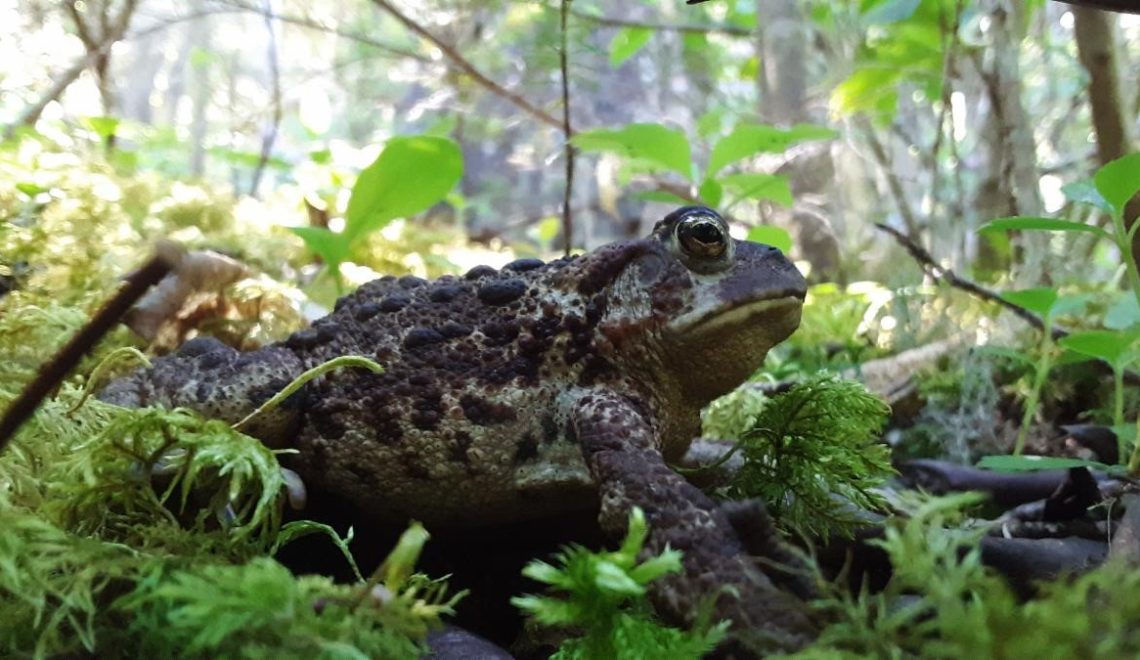
Toad Wisdom
| The Olympic Peninsula, abounding in moist habitats, supports an extraordinary number of often unnoticed amphibians. The lush forests, rotten logs, ponds and streams provide the perfect home for 13 species of salamanders, frogs, and toads. While across the globe many amphibians are declining, here on the Olympic Peninsula most species seem to be relatively stable. Research shows the one species that might be declining, is the western toad. Western toads occupy a variety of habitats. They are terrestrial beings that lay their eggs at the edge of water in a range of different elevations. These versatile creatures also adjust their activity seasonally, diurnal during the spring and fall to bask in the sun, nocturnal during the warmer summer months to avoid evaporative conditions, and hibernate through winter. Although exquisitely adapted, western toads (like other amphibians) are extremely sensitive to environmental change. The feature that makes amphibians special and successful, is also what makes them more susceptible: their porous skin. Adapted to absorb gases and liquids from both air and water, their skin puts them at risk from pollutants at all stages of their lives. The Western toad is currently federally listed as “near threatened” due to the impact of disease and chemical contaminants in the environment. They are also a candidate species for listing as “species of concern” in Washington state. One chief chemical threat is thought to be the overuse of the fertilizer urea, which is applied in forests to increase biomass productivity. The chemical is absorbed through their skin and can lead to increased mortality. Reducing or eliminating use of fertilizer, pesticides, and other chemicals would benefit our local amphibian population. Knowing that amphibians are sensitive to their surrounding environment, we can use their presence as an indicator of environmental health. Paying close attention to their numbers is a great way to monitor your immediate environment. Are you seeing toads in your own yard? (Not only are they a measure of health but are considered a gardener’s friend as they eat garden pests such as non-native slugs! Other main food source is insects.) We have a lot to learn from these marvelous animals that survived the extinction of dinosaurs. They have the ability to warn us about the quality of the home we both share. We should listen. Photo Credit: Tomás Setubal Western Toad 6/22/20 |

